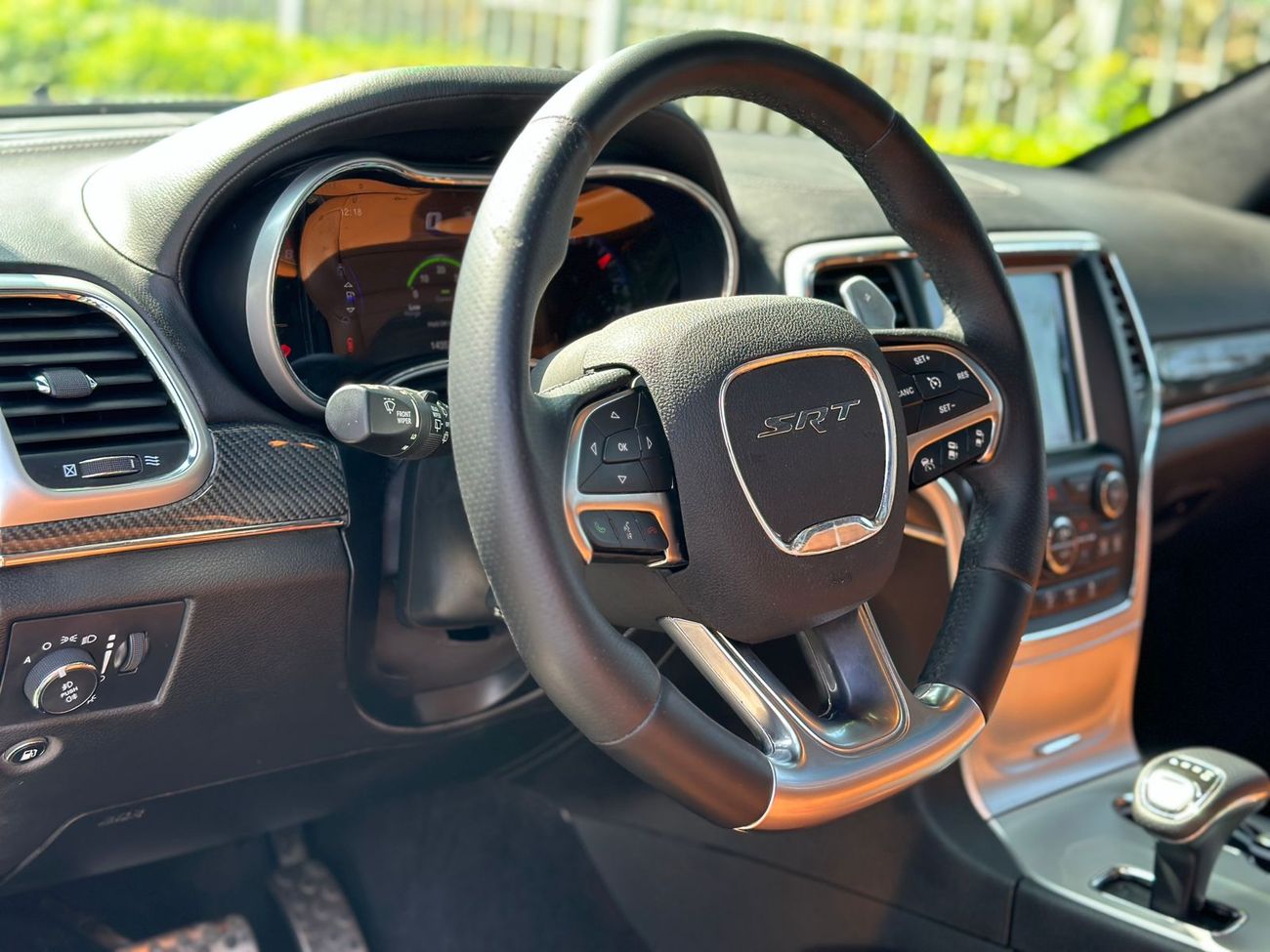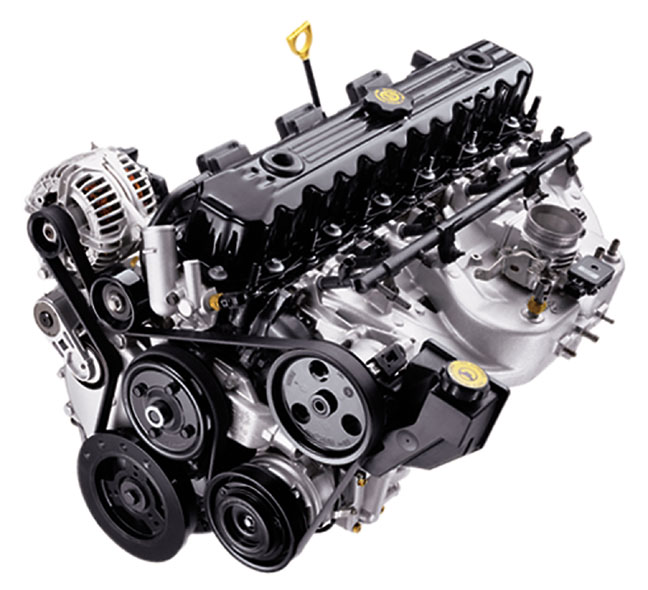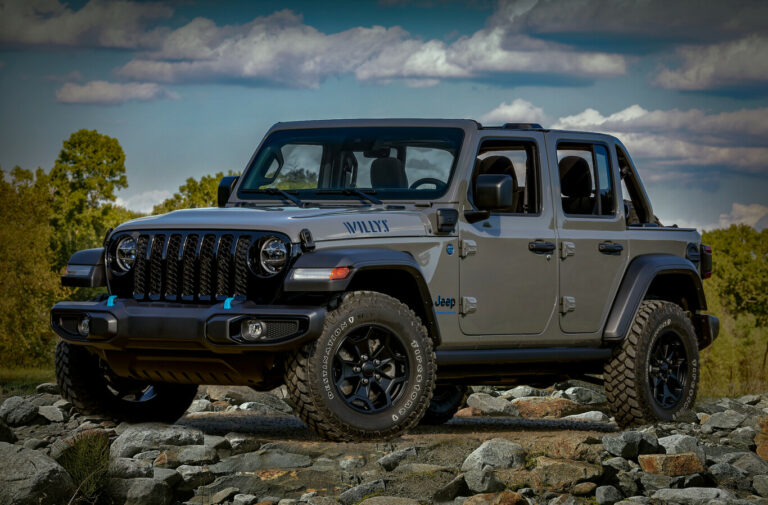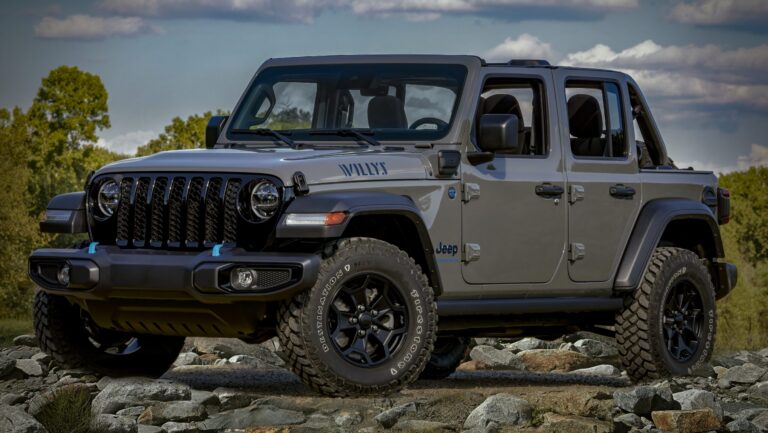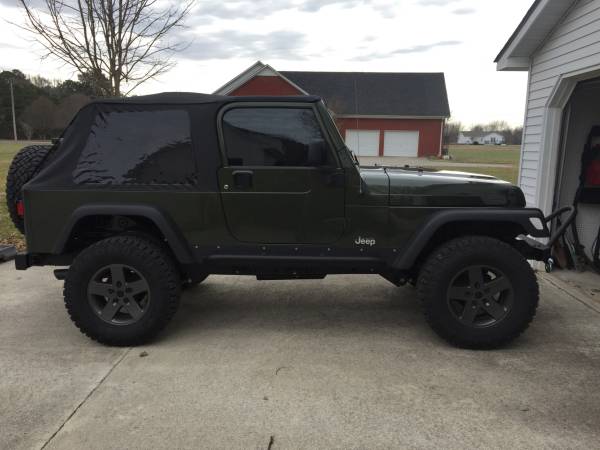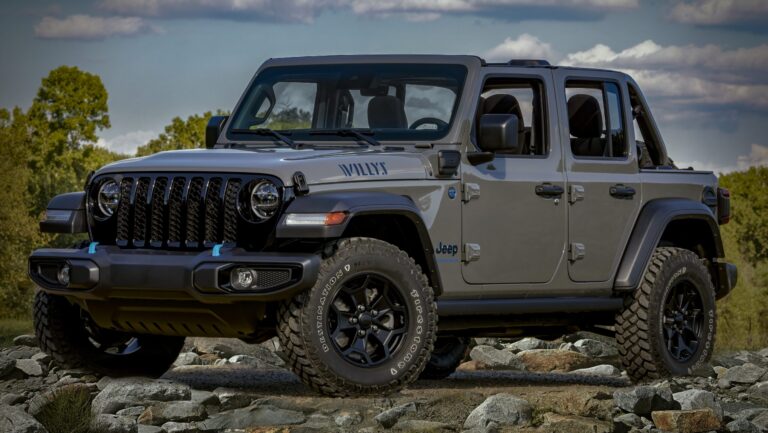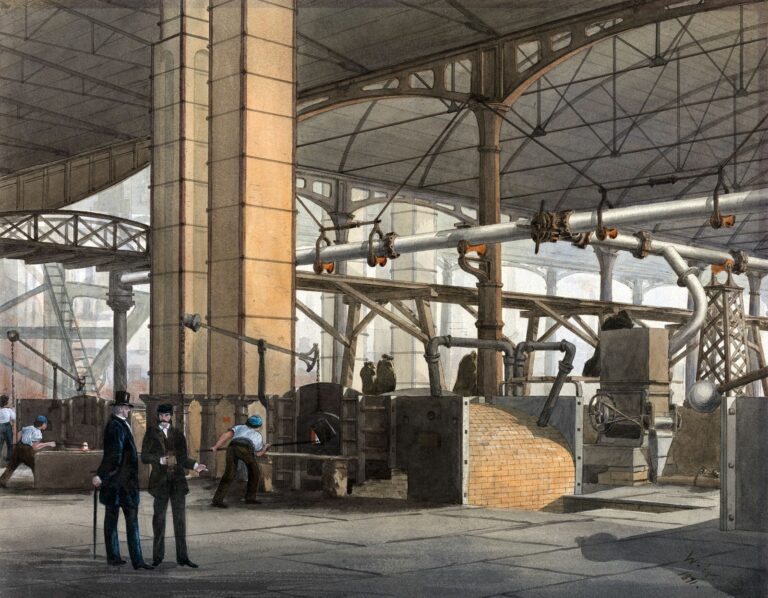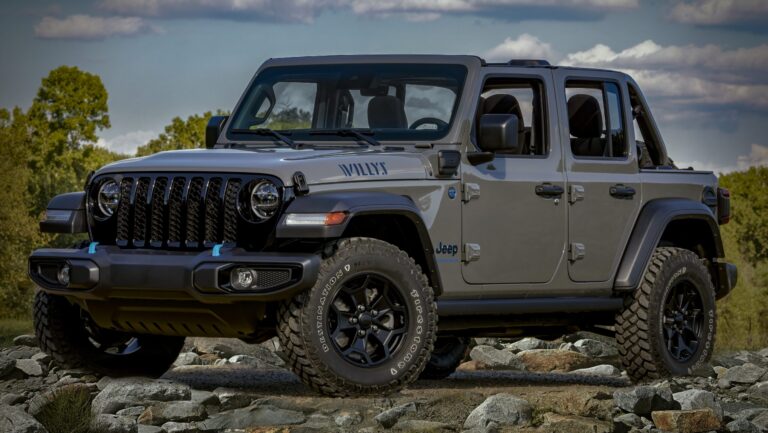SRT8 Jeep Engine Specs: Unleashing the Beast Within
SRT8 Jeep Engine Specs: Unleashing the Beast Within jeeps.truckstrend.com
The Jeep Grand Cherokee SRT8 is not just another SUV; it’s a high-performance machine that redefined what a utility vehicle could be. Born from the minds at Chrysler’s Street & Racing Technology (SRT) division, the SRT8 Grand Cherokee combines the rugged capability of a Jeep with the heart of a muscle car. At the core of this transformation lies its formidable engine – a HEMI powerhouse designed to deliver exhilarating acceleration and raw, unadulterated power. Understanding the SRT8 Jeep engine specs is crucial for any enthusiast, prospective owner, or simply anyone who appreciates automotive engineering at its finest. These specifications tell the story of a relentless pursuit of performance, outlining the very DNA that makes the SRT8 Grand Cherokee a legend in the world of performance SUVs.
This comprehensive guide will delve deep into the engine specifications of the various SRT8 Jeep Grand Cherokee models, exploring their evolution, key features, performance capabilities, and what makes them tick.
SRT8 Jeep Engine Specs: Unleashing the Beast Within
The Genesis of Power: Early SRT8 Jeep Engines (2006-2010 WK1)
The first generation of the Grand Cherokee SRT8, known internally as the WK1, burst onto the scene in 2006, immediately capturing attention with its aggressive stance and, more importantly, its powerful engine. This era marked the introduction of a specially tuned HEMI engine, distinct from its standard counterparts.
Engine Type: 6.1L (370 cu in) naturally aspirated HEMI V8
Key Specifications:
- Displacement: 6.059 liters (370 cubic inches)
- Bore x Stroke: 103.0 mm x 90.9 mm (4.06 in x 3.58 in)
- Compression Ratio: 10.3:1
- Horsepower: 420 hp (313 kW) at 6,200 rpm
- Torque: 420 lb-ft (569 Nm) at 4,800 rpm
- Redline: 6,400 rpm
- Fuel System: Multi-port fuel injection
- Valvetrain: OHV (Overhead Valve), 2 valves per cylinder

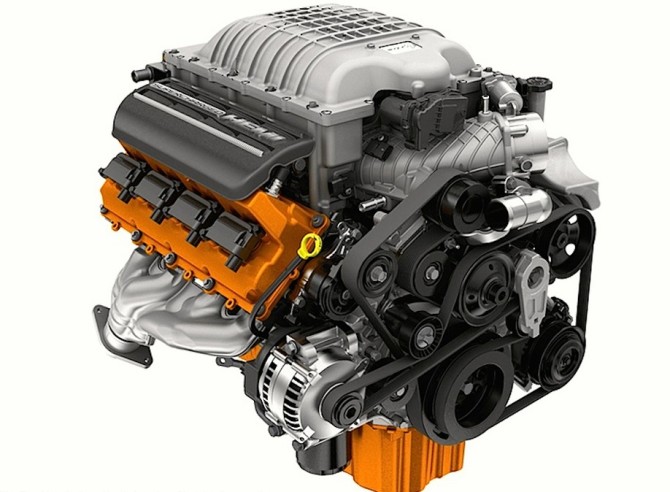
Distinctive Features:
The 6.1L HEMI was far more than just a bored-out version of the standard 5.7L. It featured a host of performance-enhancing components:
- Strengthened Block: Designed to withstand higher power outputs.
- Forged Steel Crankshaft: For increased durability and reduced flex.
- Powdered Metal Connecting Rods: Stronger than standard cast rods.
- Lightweight Aluminum Pistons: For improved responsiveness.
- Unique Cylinder Heads: Engineered for improved airflow.
- Larger Intake Manifold: Optimized for high-RPM breathing.
- High-Flow Exhaust Manifolds: Reducing back pressure.

Performance Impact:
This engine propelled the WK1 SRT8 from 0 to 60 mph in just under 5 seconds, with a quarter-mile time in the low 13-second range. For an SUV weighing over 4,800 pounds, these figures were astonishing and solidified its reputation as a true performance vehicle. The raw, guttural exhaust note was a signature characteristic, announcing its presence long before it passed by.
Evolution and Refinement: The WK2 Era (2012-2021)
After a brief hiatus, the Grand Cherokee SRT8 returned for the WK2 generation in 2012, bringing with it a significant upgrade in power and technology. While still bearing the SRT8 moniker, the engine under the hood was a new iteration of the HEMI.
Engine Type: 6.4L (392 cu in) naturally aspirated HEMI V8
Key Specifications:
- Displacement: 6.417 liters (392 cubic inches)
- Bore x Stroke: 103.9 mm x 94.5 mm (4.09 in x 3.72 in)
- Compression Ratio: 10.9:1
- Horsepower: 470 hp (351 kW) at 6,000 rpm (initially), later increased to 475 hp (354 kW)
- Torque: 465 lb-ft (630 Nm) at 4,300 rpm
- Redline: 6,400 rpm
- Fuel System: Multi-port fuel injection
- Valvetrain: OHV, 2 valves per cylinder with Variable Valve Timing (VVT) and Fuel Saver Technology (MDS)
Technological Advancements:
The 6.4L HEMI brought not just more displacement but also critical technological improvements:
- Variable Valve Timing (VVT): Optimized valve lift and duration for improved low-end torque and high-end power.
- Fuel Saver Technology (MDS – Multi-Displacement System): This innovative system allowed the engine to seamlessly deactivate four cylinders under light load conditions, significantly improving fuel efficiency without compromising performance when power was needed.
- Active Intake Manifold: Tuned for optimal airflow across the RPM range.
Performance Impact:
The WK2 SRT8 with the 6.4L HEMI was even quicker than its predecessor, achieving 0-60 mph in the mid-4-second range and a quarter-mile in the high 12-second range. The increased torque at lower RPMs made it feel more responsive in everyday driving, while the VVT and MDS systems provided a more refined and efficient experience. This engine solidified the SRT8’s position as a dominant force in the performance SUV segment.
The Supercharged Beast: Grand Cherokee Trackhawk (2018-2021)
While technically not branded as an "SRT8" (it was simply "Trackhawk"), no discussion of high-performance Jeep engines would be complete without acknowledging the pinnacle of the Grand Cherokee’s power evolution: the Trackhawk. This model took the concept of a performance SUV to an entirely new, mind-bending level by introducing forced induction.
Engine Type: 6.2L (376 cu in) Supercharged HEMI V8 (Hellcat engine)
Key Specifications:
- Displacement: 6.166 liters (376 cubic inches)
- Supercharger: IHI twin-screw supercharger
- Boost Pressure: 11.6 psi (0.8 bar)
- Compression Ratio: 9.5:1
- Horsepower: 707 hp (527 kW) at 6,000 rpm
- Torque: 645 lb-ft (875 Nm) at 4,800 rpm
- Redline: 6,200 rpm
- Fuel System: High-flow multi-port fuel injection
- Valvetrain: OHV, 2 valves per cylinder
Engineering Marvel:
The Hellcat engine in the Trackhawk is a masterpiece of engineering, featuring:
- Forged Steel Crankshaft and Connecting Rods: Built to withstand immense power.
- Heat-Treated Aluminum Pistons: For durability under extreme conditions.
- Enhanced Cooling System: Crucial for managing the heat generated by the supercharger.
- High-Capacity Fuel System: To deliver the necessary fuel flow.
Unprecedented Performance:
The Trackhawk redefined SUV performance, launching from 0 to 60 mph in a blistering 3.5 seconds and covering the quarter-mile in the mid-11-second range. It was, for a time, the fastest production SUV in the world, showcasing the incredible potential of the HEMI platform when combined with forced induction. While a different beast from the naturally aspirated SRT8, its existence is a testament to the high-performance heritage cultivated by the SRT division.
Beyond Stock: Performance Upgrades and Considerations
For many SRT8 owners, the stock engine specs are just the starting point. The HEMI platform is highly tunable and capable of handling significant power increases with the right modifications.
Common Upgrades for Naturally Aspirated (6.1L/6.4L) Engines:
- Cold Air Intakes: Improve airflow to the engine.
- Aftermarket Exhaust Systems: Reduce back pressure and enhance sound.
- Long-Tube Headers: Further improve exhaust flow.
- Custom Engine Tuning (ECU Flash): Optimizes fuel, ignition, and VVT maps for more power.
- Camshaft Upgrades: More aggressive lift and duration profiles can yield substantial power gains.
- Forced Induction (Superchargers/Turbochargers): The most significant power adder, transforming the naturally aspirated HEMI into a monster. This requires significant supporting modifications.
Considerations for Upgrades:
- Fuel System: Increased power demands more fuel; upgraded injectors and fuel pumps are often necessary.
- Cooling System: More power generates more heat; upgraded radiators, oil coolers, and intercoolers (for forced induction) are vital.
- Transmission and Drivetrain: The stock transmission (especially the 5-speed in the WK1) may need upgrades to handle significantly increased torque. Axles, driveshafts, and differentials might also require strengthening.
- Engine Internals: For extreme power, especially with forced induction, forged pistons, rods, and crankshafts become essential for reliability.
- Professional Installation and Tuning: It’s highly recommended to have major modifications installed and tuned by reputable performance shops specializing in HEMI engines. Incorrect tuning can lead to catastrophic engine failure.
Maintenance and Longevity for Your SRT8 Engine
These high-performance engines require diligent maintenance to ensure their longevity and continued performance. Neglecting proper care can lead to costly repairs.
Key Maintenance Practices:
- Oil Changes: Use the manufacturer-recommended synthetic oil (typically 0W-40 or 5W-40 for SRT/Trackhawk) at specified intervals (usually 6,000-10,000 miles or annually, whichever comes first). Regular oil analysis can provide insights into engine health.
- Coolant System: Ensure the cooling system is in top condition. Flush and replace coolant per manufacturer guidelines. Inspect hoses, radiator, and water pump regularly. For Trackhawks, the supercharger’s intercooler system also needs attention.
- Spark Plugs: Replace iridium or platinum spark plugs at recommended intervals (e.g., 30,000 miles for some models).
- Air Filters: Check and replace air filters regularly to ensure optimal airflow and prevent contaminants from entering the engine.
- Transmission Fluid: Adhere to transmission fluid service intervals.
- Belt and Hose Inspection: Routinely check the serpentine belt and all hoses for cracks or wear.
Common Issues to Monitor:
- Lifter Tick: A known issue in some HEMI engines. While often benign, excessive ticking can indicate a failing lifter or cam lobe wear, requiring attention.
- MDS Solenoid Issues (6.4L): Malfunctioning MDS solenoids can lead to rough idling or activation issues.
- Heat Soak: High-performance engines, especially supercharged ones, can suffer from heat soak in hot climates or during aggressive driving, leading to temporary power reduction. Ensuring the cooling system is optimal helps mitigate this.
- Fuel Quality: Always use premium octane fuel as specified by the manufacturer. Lower octane fuel can lead to pre-ignition and engine damage, especially in high-compression or forced-induction engines.
Practical Advice:
- Listen to Your Engine: Pay attention to unusual noises, vibrations, or changes in performance.
- Monitor Gauges: Keep an eye on oil pressure, coolant temperature, and oil temperature.
- Regular Diagnostics: Even if there are no apparent issues, occasional diagnostic scans can help identify potential problems early.
- Professional Servicing: For specialized components or complex issues, always seek out certified technicians or performance shops experienced with SRT vehicles.
Key Engine Specifications Comparison Table
This table provides a concise overview of the primary engine specifications for the high-performance Jeep Grand Cherokee models.
| Model Year Range | Model Name | Engine Type | Displacement (L / cu in) | Horsepower (hp) | Torque (lb-ft) | Compression Ratio | Key Features |
|---|---|---|---|---|---|---|---|
| 2006-2010 | Grand Cherokee SRT8 (WK1) | Naturally Aspirated HEMI V8 | 6.1L / 370 | 420 | 420 | 10.3:1 | Forged Crank, Unique Heads, High-Flow Intake |
| 2012-2021 | Grand Cherokee SRT8 (WK2) | Naturally Aspirated HEMI V8 | 6.4L / 392 | 470-475 | 465 | 10.9:1 | VVT, MDS (Fuel Saver Tech), Active Intake Manifold |
| 2018-2021 | Grand Cherokee Trackhawk | Supercharged HEMI V8 (Hellcat) | 6.2L / 376 | 707 | 645 | 9.5:1 | IHI Supercharger, Forged Internals, Enhanced Cooling |
Frequently Asked Questions (FAQ)
Q1: What does "SRT8" stand for?
A1: SRT stands for "Street & Racing Technology," which was Chrysler’s high-performance vehicle division. The "8" refers to the V8 engine configuration.
Q2: Is the SRT8 engine reliable?
A2: Generally, yes, with proper and diligent maintenance. Like any high-performance engine, it requires specific care, including using premium fuel and adhering to strict service intervals. Neglect can lead to issues.
Q3: Can I put a supercharger on my naturally aspirated 6.4L SRT8?
A3: Yes, it’s a popular modification. However, it’s a significant undertaking that requires substantial supporting modifications (fuel system, cooling, transmission upgrades, and engine internals for higher boost levels) and professional tuning to ensure reliability and performance.
Q4: What’s the main difference between the 6.1L and 6.4L HEMI engines in the SRT8 Jeeps?
A4: The 6.4L (WK2) is a larger displacement engine than the 6.1L (WK1) and incorporates modern technologies like Variable Valve Timing (VVT) and Multi-Displacement System (MDS) for improved efficiency and broader power delivery. It also produces significantly more horsepower and torque.
Q5: Is the Grand Cherokee Trackhawk engine the same as the SRT8 engine?
A5: No, they are different. While both are HEMI V8s, the Trackhawk uses a supercharged 6.2L Hellcat engine, which is specifically designed for forced induction and produces a staggering 707 horsepower. The SRT8 models (WK1 and WK2) use naturally aspirated 6.1L and 6.4L HEMI engines, respectively.
Q6: What kind of fuel does an SRT8 Jeep require?
A6: All SRT8 Grand Cherokees and the Trackhawk require premium octane fuel (typically 91-93 octane, depending on region). Using lower octane fuel can lead to engine knock, reduced performance, and potential long-term damage.
Concluding Summary
The SRT8 Jeep Grand Cherokee, across its generations, stands as a testament to the power and versatility of the HEMI engine. From the raw, naturally aspirated punch of the 6.1L WK1, through the refined yet more potent 6.4L WK2, and culminating in the ballistic supercharged 6.2L Trackhawk, each iteration pushed the boundaries of SUV performance. These engines are not merely powerplants; they are meticulously engineered hearts that define the character and capability of these extraordinary vehicles. Understanding their specifications is key to appreciating their engineering prowess, maintaining their peak performance, and recognizing the significant impact they’ve had on the automotive landscape. The SRT8 Jeep engine specs tell a compelling story of relentless innovation and a passion for high-octane performance that continues to captivate enthusiasts worldwide.
